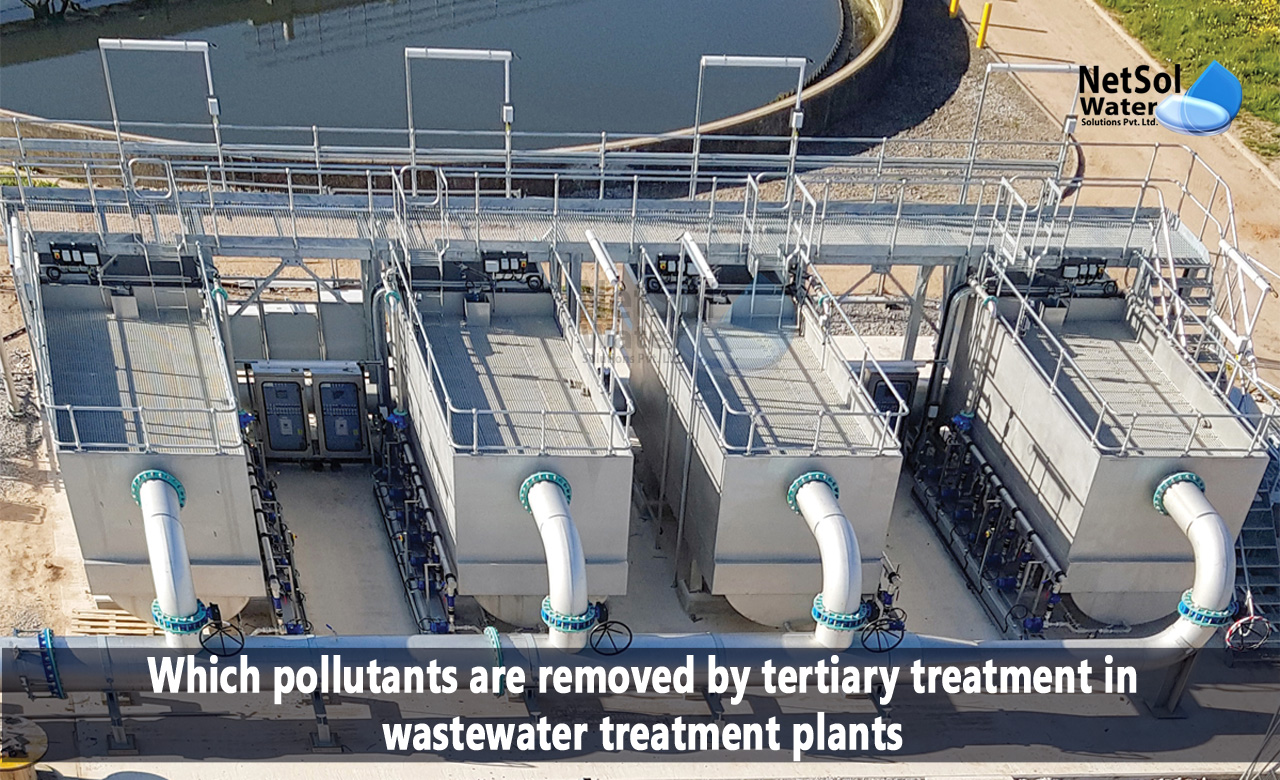Tertiary wastewater treatment is the final step in the multi-stage wastewater cleansing process. During the third phase of treatment, inorganic substances, bacteria, viruses, and parasites are all eliminated.
The water has been treated and is safe to reuse, recycle, or discharge into the environment, after these harmful substances have been taken out.
Which pollutants are removed by tertiary treatment in wastewater treatment plants?
Odour: Fresh wastewater typically has a musty smell that is not unpleasant, but as it ages, this smell changes to one that is. The wastewater loses all of its oxygen within 3 to 4 hours, at which point an unpleasant odour of hydrogen sulfide gas and other sulphur compounds, created by anaerobic microbes, starts to emanate from it.
Turbidity: The volume of suspended solids affects the turbidity of wastewater. Turbidity tests are used to assess the quality of waste discharges in terms of colloidal matter.
Turbidity is a measure of the light-emitting characteristics of wastewater. The strength of wastewater affects how turbid it is. The strength or concentration of the wastewater increases with increasing turbidity. A turbidity rod or a Jackson's turbidimeter can be used to measure turbidity.
Nitrogen Content: The presence of nitrogen in wastewater is a sign that the water is organic. Nitrogen is categorized as a nutrient or bio-stimulant because it is necessary for the growth of Protista and plants.
Since, nitrogen is a crucial component of protein synthesis, data on nitrogen levels are necessary to assess the biological treatment potential of wastewater.
Chlorides: Because, chlorides are mineral salts, they are not impacted by wastewater's biological activity. Natural water contains chlorides because chloride-containing rocks and soils have leached into the water.
Domestic wastewater contains chlorides that come from a variety of sources, including food scraps, human waste, and urine. Human excreta, for instance, contain roughly 6 g of chlorides daily per person.
Technologies applied in tertiary treatment of wastewater
The nitrogen and phosphate in the wastewater are eliminated during tertiary treatment. Filtration, ion exchange, activated carbon adsorption, electro dialysis, nitrification, and denitrification are a few of the processes involved.
Filtration process: Wastewater is filtered to remove particulate matter by circulating it through a porous medium. Many different forms of media, which frequently consist of sand, gravel, and charcoal, are used in the filtering process. The two types of sand filtration are slow sand filtration and quick sand filtration.
Membrane process: Wastes like organic and inorganic detritus, and water-soluble oil wastes are all handled by membrane technology. Membrane processes are categorized based on their driving power and mechanism of separation, such as Reverse Osmosis (RO), Multi Filtration (MF), Ultrafiltration (UF), and Nanofiltration (NF).
Ozone: To kill germs and break down organic contaminants, ozone is added to the process. Ozone gas (O3) is created by moving oxygen via a high voltage electric field. Ozone is currently the disinfectant that is used the most, second only to chlorine.
What do we offer?
Netsol Water is one of India's top producers of water treatment plants, wastewater treatment plants, sewage treatment systems, effluent treatment plants, etc. We are also the top service provider for waste and wastewater solutions, including treatments, testing and monitoring, analysis, and suggested remedial actions.
We combine cutting-edge technology with our years of experience, to handle the most challenging water treatment or wastewater treatment requirements, of a wide range of clients including small enterprises, corporations, regional government agencies, industries, municipalities, etc.
For further information or to make a product purchase, please contact us at +91-9650608473 or enquiry@netsolwater.com



